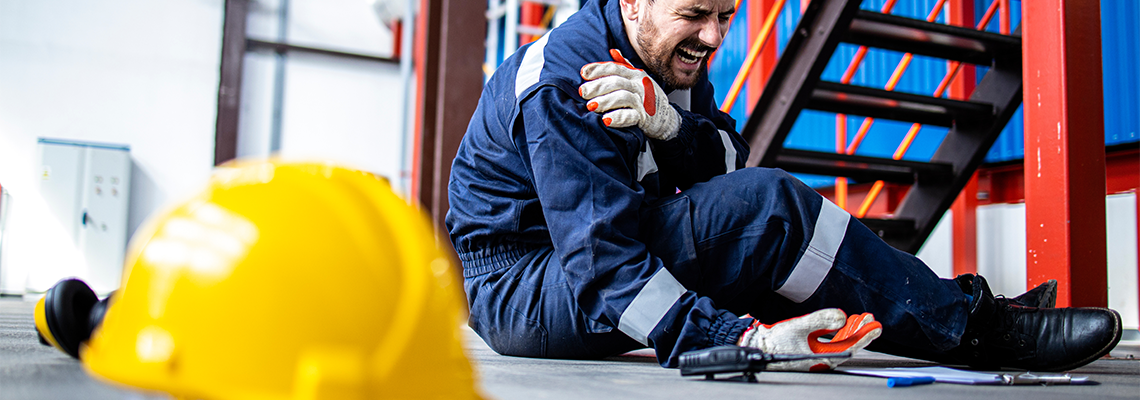
Steps to Take After an Oilfield Injury
According to statistics compiled by the International Association of Gas Producers (IGOP) and its 2021 safety report, both the rate of injuries and fatalities among its member companies increased from the year prior. Fatalities at 20 were up from 14, and the injury rate was up 10 percent. Injuries that resulted in days lost from work totaled 580. The IGOP statistics aren’t broken down by country or state, but the Alaska Department of Labor and Workforce Development lists 11 fatalities in the natural resources and mining industry for 2020, the latest reporting period.
In other words, working in an oilfield can be a dangerous occupation. If you’re an employee and become injured, you should be covered by workers’ compensation—but if you’re a contractor, you can be left to your own devices if injured. You can then pursue legal action if necessary, so long as you can prove someone’s negligence caused the injury.
If you or a loved one has been injured in an oilfield or related accident in or around Anchorage, Alaska, contact me immediately at the Law Office of Jason Skala, LLC. I have more than two decades of experience as a personal injury attorney who has collected more than $40 million in compensation for clients. My firm also proudly serves clients in Bethel, Kotzebue, and Barrow (Utqiagvik).
Regulations Affecting Oilfield Safety
The U.S. Occupational Safety and Health Administration (OSHA) issues standards and regulations regarding workplace safety and health. The General Duty Clause of the Occupational Safety and Health Act (OSH Act), which led to the creation of OSHA, requires employers to provide workers with a safe workplace that does not have any recognized hazards that cause or are likely to cause death or serious injury.
The Alaska Department of Labor and Workforce Development has statutory authority over occupational safety and health programs for the state. To carry out this function, the Department established the Division of Labor and Standards, which has issued quite detailed Petroleum Drilling and Production Standards.
The federal Jones Act covers workers in the industry who are deployed to offshore rigs. If the rigs are mobile and therefore considered seagoing, the Jones Act will cover injuries for anyone aboard.
Common Oilfield Injuries
The IGOP study says that 20 percent of injuries reported were from slips and falls and 18 percent from “struck by another object.” These statistics run fairly parallel to injuries suffered at construction sites.
Injuries can also result from operating oilfield machinery, whether due to inadequate training or inattention to safety precautions by the operator or company in general. There is also the possibility of the equipment or machine itself causing the injury through malfunctioning.
Being struck by an operating vehicle is also responsible for oilfield accidents. Gas poisoning, electrocution, fires, and explosions also loom large.
The results of injuries from working in an oilfield operation can be severe. A slip and fall can result in head, brain, neck, and back injuries. A concussion is certainly a possibility.
Leg, arm, and foot injuries range from a sprain or fracture up to total loss. Hands and arms are especially at risk when operating machinery. In addition, soft tissue injuries like the tearing of a muscle or tendon are fairly common in oilfields. Severe burns can occur if there is a fire or explosion.
Steps to Take Following an Injury
If you do suffer an injury at work, you need to seek medical attention immediately. You also must, whenever it’s possible, document the accident in detail. If you are able at the time of the accident to take photos of the scene, including your injuries, do so. If there are witnesses, get their statements or at least their contact information.
You also must report the incident immediately to your employer. When you undergo your medical examination and treatment/therapy, keep all expense records to use in your claim or lawsuit. You also may need to get copies of X-Ray, MRI, and other test results as evidence, which may be required by your workers’ compensation administrator and which would certainly prove important in any personal injury lawsuit.
After suffering an oilfield injury, the path to recovering your expenses—including any lost time from work—looks different for employees than it does for contractors. If you’re an employee, you will need to file a claim with workers’ compensation. If you are a contractor, you will need to consider a personal injury lawsuit. In both circumstances, if a piece of equipment caused your injury, you might be able to file a third-party lawsuit against the manufacturer, designer, or supplier.
The bottom line is that you should seek the advice and guidance of an experienced personal injury attorney as soon as you are injured. Examine all your options with your attorney.
Knowledgeable & Personalized Legal Advocacy
Toiling on an oilfield poses the risk of injury and sometimes even fatality. You may be covered by workers’ compensation, but your claim may be challenged for additional medical proof. The insurer may also try to lowball your settlement.
In that light, your most important step is to immediately seek legal assessment and guidance. You may have the grounds for a third-party lawsuit, and the help of an attorney in putting together your workers’ compensation claim can also prove invaluable.
If you or a loved one has been injured at work in or around Anchorage, Alaska, contact me immediately at the Law Office of Jason Skala, LLC. Your first consultation is free. I will discuss your situation with you and advise you of your best options going forward—and then strive to obtain the fair compensation you deserve.
